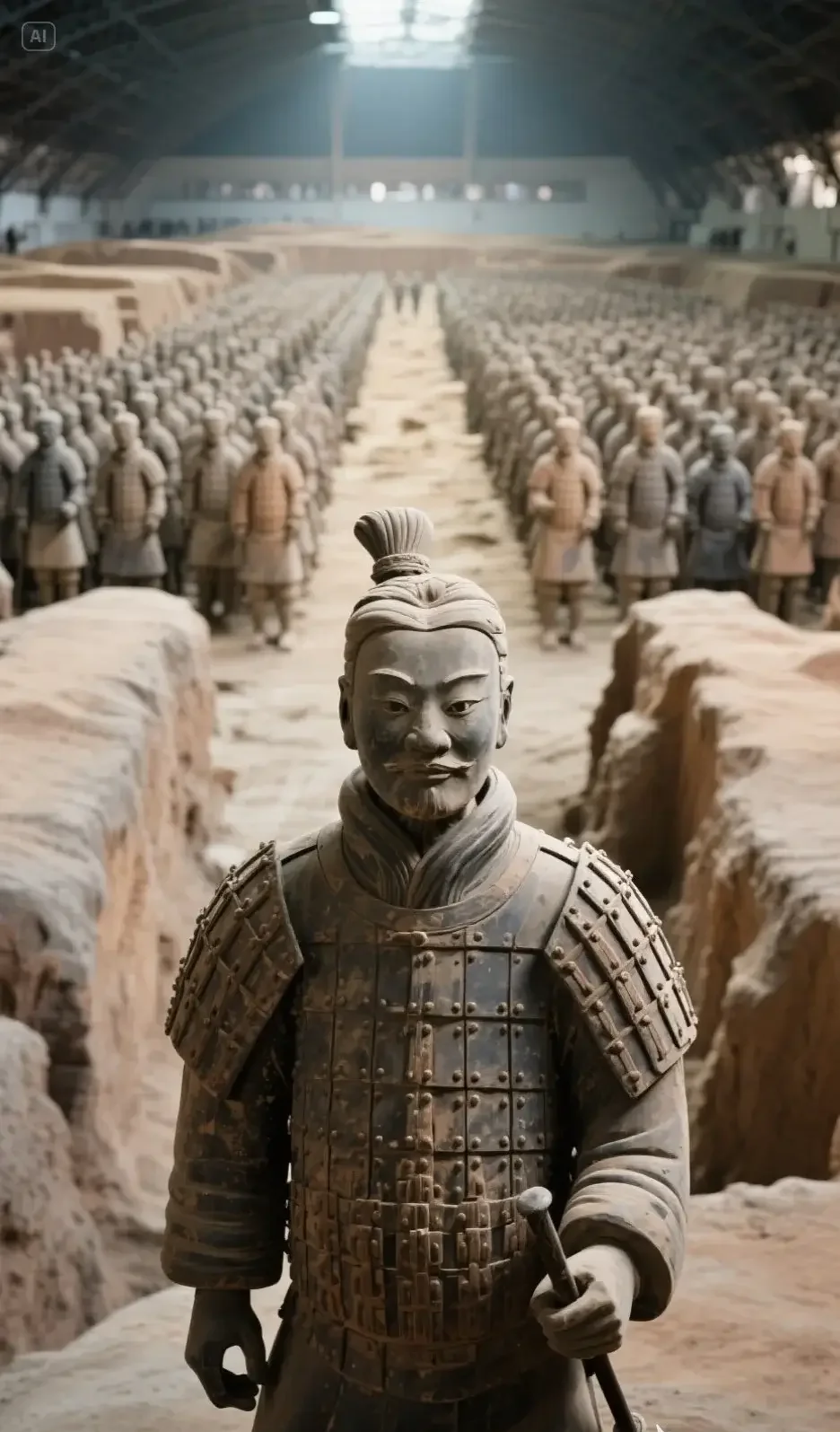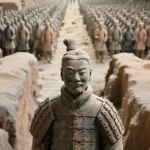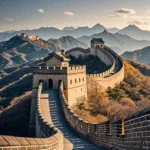The Terracotta Army stands as one of the greatest marvels of ancient Chinese history, renowned worldwide for its monumental scale and exquisite craftsmanship. These warriors serve as guardians of the Mausoleum of the First Qin Emperor, bearing witness to the Qin Dynasty’s unification and the emperor’s authority. Their discovery captured global attention and fascination, becoming a pivotal subject of study for archaeologists and historians.
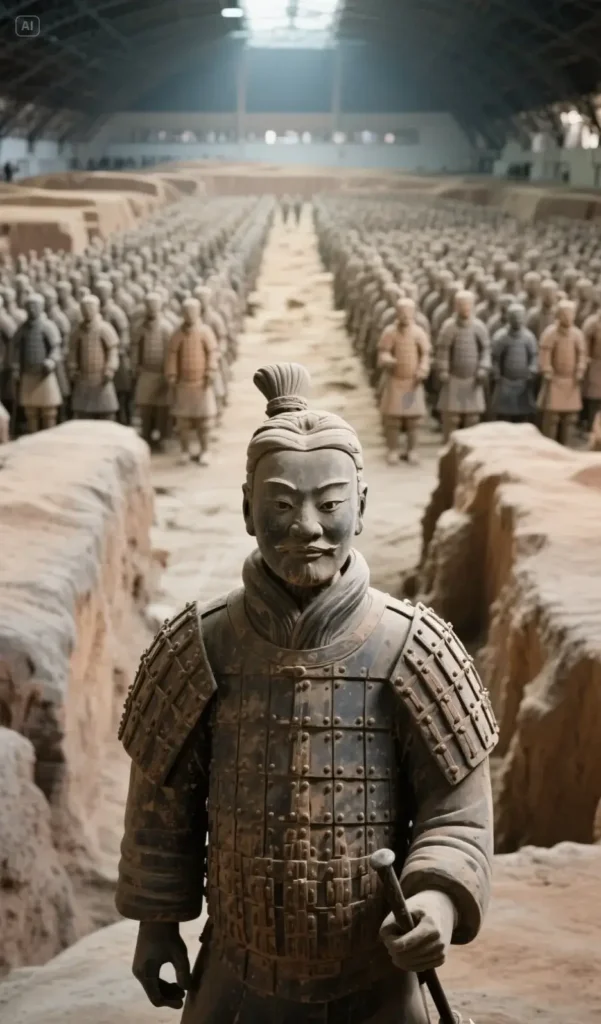
The Origins and History of the Terracotta Warriors
The discovery of the Terracotta Army began in 1974 when farmers accidentally unearthed a tomb near the Mausoleum of the First Qin Emperor in Shaanxi Province, China. Subsequently, large-scale archaeological excavations were launched, revealing a massive pit filled with terracotta warriors near the emperor’s tomb. This discovery astonished the world and sparked intense fascination with these enigmatic statues.
The scale and sheer number of terracotta warriors within the pits astonished the world. According to archaeological research, these terracotta warriors are clay figures from the Qin Dynasty, each modeled after real soldiers. Crafted with extraordinary skill and meticulous detail, they vividly capture the facial features of the soldiers while also reflecting the clothing and weaponry of the era.
The terracotta warriors within the pits are arranged according to military formations and ranks, with each pit representing a complete army. This precise military layout reflects Emperor Qin Shi Huang’s strict demands for military organization and management, while also demonstrating the formidable strength of the Qin Empire.
The scale and sheer number of terracotta warriors within the pits astonished the world. According to archaeological research, these terracotta warriors are clay figures from the Qin Dynasty, each modeled after real soldiers. Crafted with extraordinary skill and meticulous detail, they vividly capture the facial features of the soldiers while also reflecting the clothing and weaponry of the era.
The terracotta warriors within the pits are arranged according to military formations and ranks, with each pit representing a complete army. This precise military layout reflects Emperor Qin Shi Huang’s strict demands for military organization and management, while also demonstrating the formidable strength of the Qin Empire.
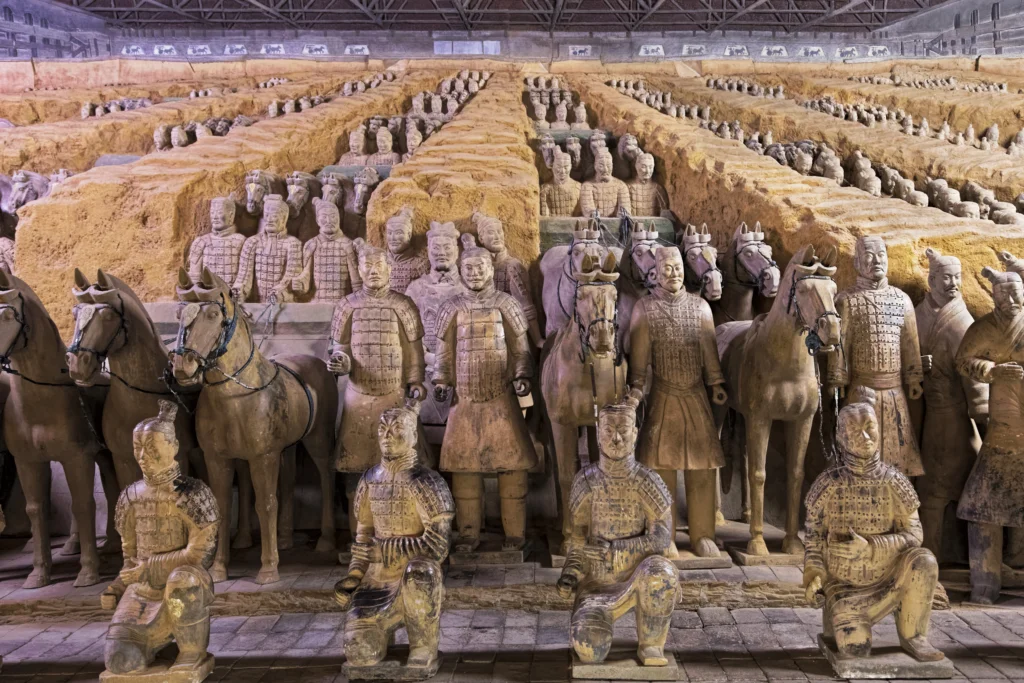
The creation and arrangement of the Terracotta Army served not only as burial companions for Emperor Qin Shi Huang, but more significantly as a display of the Qin Empire’s authority and unity. As an art form, the Terracotta Army, through its immense scale and exquisite craftsmanship, showcases the Qin Dynasty’s power and prosperity to the world.
As guardians of Emperor Qin Shi Huang’s mausoleum, the terracotta warriors symbolize the protection and defense of the empire. Hoping to continue enjoying power and dignity in the afterlife, the emperor ordered the creation of these colossal clay figures to safeguard his tomb. Their presence signifies that no one may violate the emperor’s tomb, lest they face severe punishment.
As guardians of Emperor Qin Shi Huang’s mausoleum, the terracotta warriors symbolize the protection and defense of the empire. Hoping to continue enjoying power and dignity in the afterlife, the emperor ordered the creation of these colossal clay figures to safeguard his tomb. Their presence signifies that no one may violate the emperor’s tomb, lest they face severe punishment.
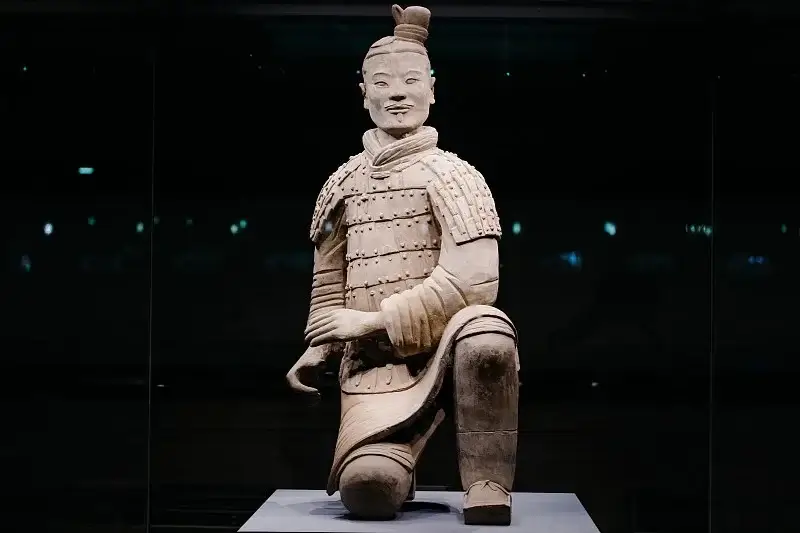
The creation of the Terracotta Army also reflects the Qin rulers’ emphasis on military strength. The military formations and ranks displayed by the terracotta warriors served not merely as tomb decorations, but more importantly, embodied the Qin Dynasty’s military might and organizational capabilities. By showcasing this formidable army, the Qin sought to project an image of unity and power both domestically and internationally.
To understand the origins and history of the Terracotta Army, one must revisit the context of the Qin Dynasty. As China’s first unified, centralized empire, it was established by Emperor Qin Shi Huang after conquering the six rival states. To consolidate his rule, the emperor implemented a series of measures, including constructing the Great Wall, standardizing writing systems, and unifying weights and measures. The creation of the Terracotta Army served as another means for Emperor Qin Shi Huang to maintain his rule and demonstrate his power.
However, Qin Shi Huang’s unified empire did not endure for long. Social unrest and political upheaval soon followed, leading to the dynasty’s swift collapse. The brevity of the Qin Dynasty meant the terracotta pits lay forgotten for centuries until their accidental discovery in 1974 brought them back into the world’s spotlight.
To understand the origins and history of the Terracotta Army, one must revisit the context of the Qin Dynasty. As China’s first unified, centralized empire, it was established by Emperor Qin Shi Huang after conquering the six rival states. To consolidate his rule, the emperor implemented a series of measures, including constructing the Great Wall, standardizing writing systems, and unifying weights and measures. The creation of the Terracotta Army served as another means for Emperor Qin Shi Huang to maintain his rule and demonstrate his power.
However, Qin Shi Huang’s unified empire did not endure for long. Social unrest and political upheaval soon followed, leading to the dynasty’s swift collapse. The brevity of the Qin Dynasty meant the terracotta pits lay forgotten for centuries until their accidental discovery in 1974 brought them back into the world’s spotlight.
The Power and Eternity of the Terracotta Warriors
Qin Shi Huang, Ying Zheng, stands as one of the greatest rulers in Chinese history. His unification of China and the construction of the Great Wall stand as wonders of the ancient world. Yet when discussing Qin Shi Huang, one cannot overlook one of his most unique and striking achievements—the Terracotta Army. This vast array of astonishing clay warriors and horses not only displays the emperor’s power and resolve but also represents an eternal symbol.
The Terracotta Army was discovered near the First Emperor’s Mausoleum in Xi’an, Shaanxi Province, following an accidental find in a farm field in 1974. This discovery subsequently captured global attention. These terracotta warriors serve as guardians of the emperor’s tomb, intended to accompany him into the afterlife where he might continue to enjoy power and majesty. Crafted with extraordinary skill, each warrior possesses a unique facial expression and posture, vividly depicting the military equipment and combat stances of Qin Shi Huang’s era.
The Terracotta Army was discovered near the First Emperor’s Mausoleum in Xi’an, Shaanxi Province, following an accidental find in a farm field in 1974. This discovery subsequently captured global attention. These terracotta warriors serve as guardians of the emperor’s tomb, intended to accompany him into the afterlife where he might continue to enjoy power and majesty. Crafted with extraordinary skill, each warrior possesses a unique facial expression and posture, vividly depicting the military equipment and combat stances of Qin Shi Huang’s era.
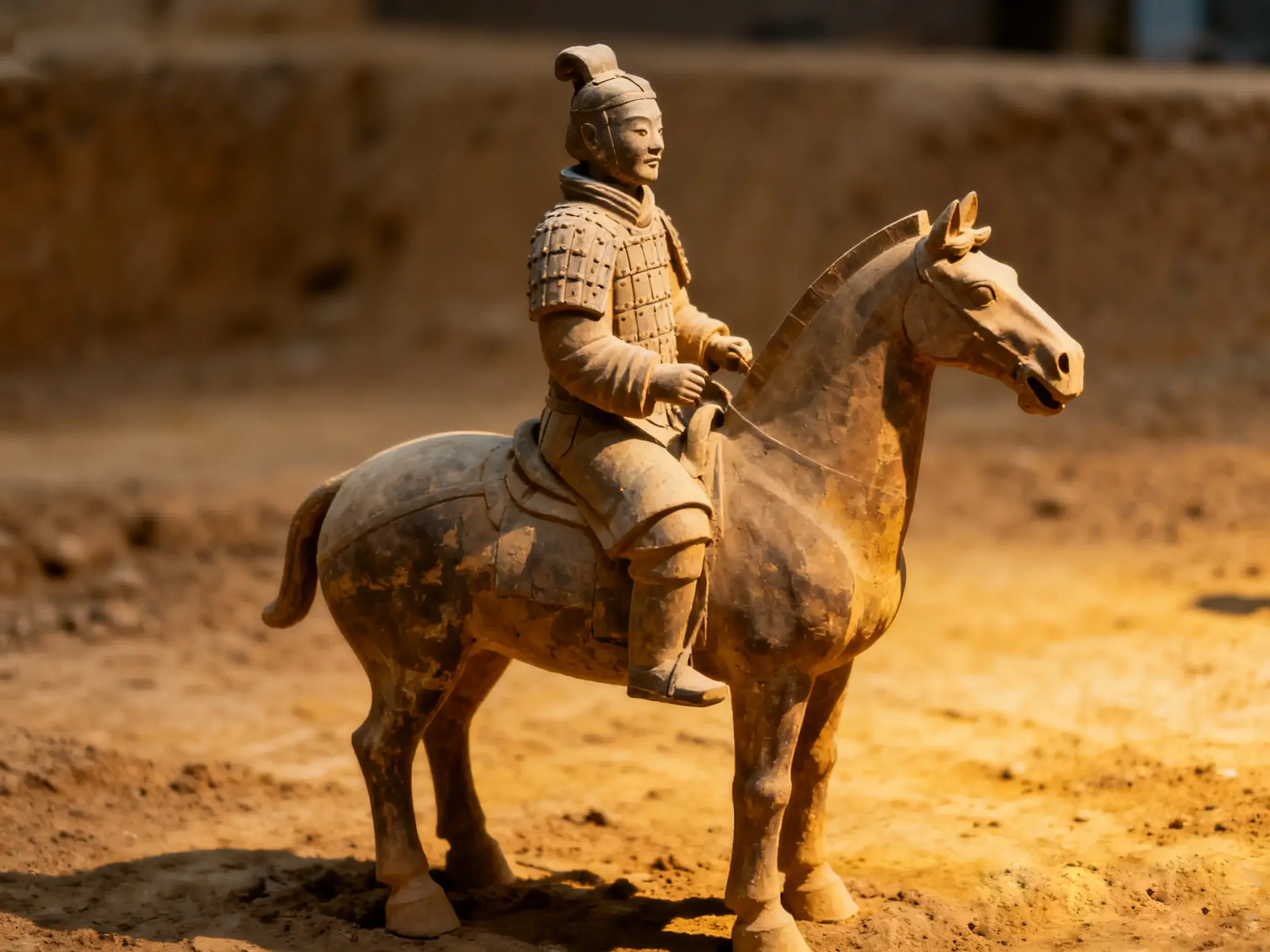
The sheer scale of the Terracotta Army is astonishing. To date, thousands of terracotta warriors have been unearthed, including soldiers, officers, cavalry, and chariots. These monumental clay figures stand in meticulously arranged military formations, seemingly recreating the armies that unified the six states under Emperor Qin Shi Huang. The magnitude and precision of detail in the Terracotta Army demonstrate the ruler’s formidable administrative capabilities and ambitious vision.
The creation of the Terracotta Army carries profound political and religious significance. During his reign, Qin Shi Huang championed and implemented centralization, consolidating his rule by forcibly unifying the states and establishing a centralized administrative system. The creation of the terracotta army served to proclaim the power of unification to the entire nation, reminding people of his authority and resolve through the display of this vast military force. The terracotta warriors also represented Qin Shi Huang’s belief in the afterlife. He believed his rule would be eternal, thus requiring warriors to accompany him and continue serving him in the afterlife.
The creation of the Terracotta Army carries profound political and religious significance. During his reign, Qin Shi Huang championed and implemented centralization, consolidating his rule by forcibly unifying the states and establishing a centralized administrative system. The creation of the terracotta army served to proclaim the power of unification to the entire nation, reminding people of his authority and resolve through the display of this vast military force. The terracotta warriors also represented Qin Shi Huang’s belief in the afterlife. He believed his rule would be eternal, thus requiring warriors to accompany him and continue serving him in the afterlife.
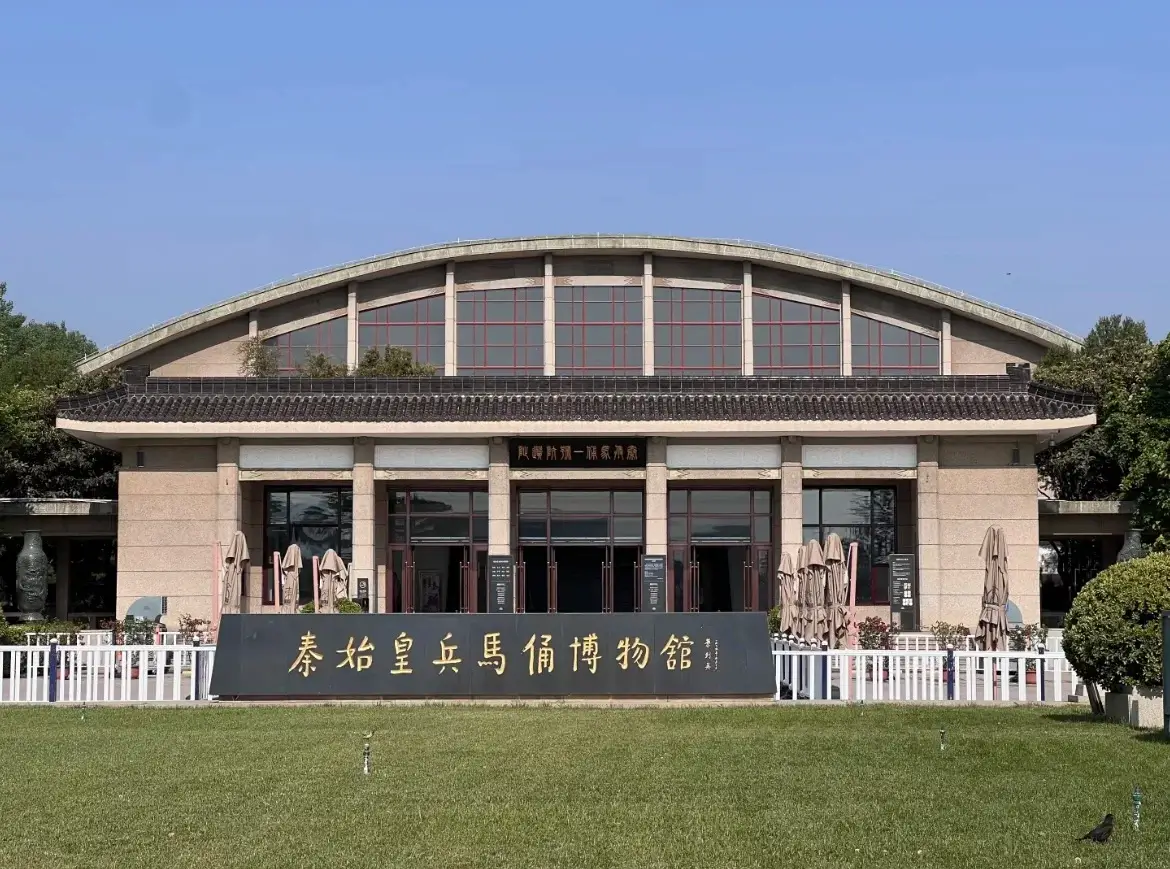
The Terracotta Army also reveals another facet of Emperor Qin Shi Huang’s power. During its construction, it is believed that vast numbers of laborers were conscripted, including farmers and criminals. These workers endured grueling conditions and brutal treatment, their lives sacrificed in the pursuit of the emperor’s power. Thus, the Terracotta Army also stands as a testament to the abuse of power and human rights violations, prompting profound reflection on the complex relationship between unification and cruelty.
The value and significance of the Terracotta Army extend far beyond the historical power struggles and brutal rule of its era. They represent a precious legacy of ancient Chinese art and craftsmanship, as well as invaluable testimony to the society, military, and culture of the Qin Dynasty. The discovery and study of the Terracotta Army offer us a profound opportunity to understand the era of Qin Shi Huang, revealing multifaceted aspects of ancient Chinese society.
The value and significance of the Terracotta Army extend far beyond the historical power struggles and brutal rule of its era. They represent a precious legacy of ancient Chinese art and craftsmanship, as well as invaluable testimony to the society, military, and culture of the Qin Dynasty. The discovery and study of the Terracotta Army offer us a profound opportunity to understand the era of Qin Shi Huang, revealing multifaceted aspects of ancient Chinese society.
Uncovering the Journey of the Terracotta Warriors’ Discovery
The story of the Terracotta Army began in 1974 when a brick was discovered in a farm field in Xi’an, Shaanxi Province. As farmers began excavating the area, they were astonished to uncover a vast underground palace—the Mausoleum of the First Qin Emperor, hailed as the Eighth Wonder of the World.
Accessing the Qin Shi Huang Mausoleum proved challenging. Due to its invaluable cultural heritage and historical significance, archaeologists had to proceed with extreme caution during excavation and preservation efforts. It took decades to complete the initial exploration and excavation of the tomb complex.
Within the main burial chamber, archaeologists uncovered a vast pit filled with thousands of terracotta warriors. This pit is divided into several sections, each representing different military units and ranks. The soldiers stand in perfect formation, appearing almost lifelike, showcasing the grandeur and scale of the Qin Dynasty’s military might.
Accessing the Qin Shi Huang Mausoleum proved challenging. Due to its invaluable cultural heritage and historical significance, archaeologists had to proceed with extreme caution during excavation and preservation efforts. It took decades to complete the initial exploration and excavation of the tomb complex.
Within the main burial chamber, archaeologists uncovered a vast pit filled with thousands of terracotta warriors. This pit is divided into several sections, each representing different military units and ranks. The soldiers stand in perfect formation, appearing almost lifelike, showcasing the grandeur and scale of the Qin Dynasty’s military might.
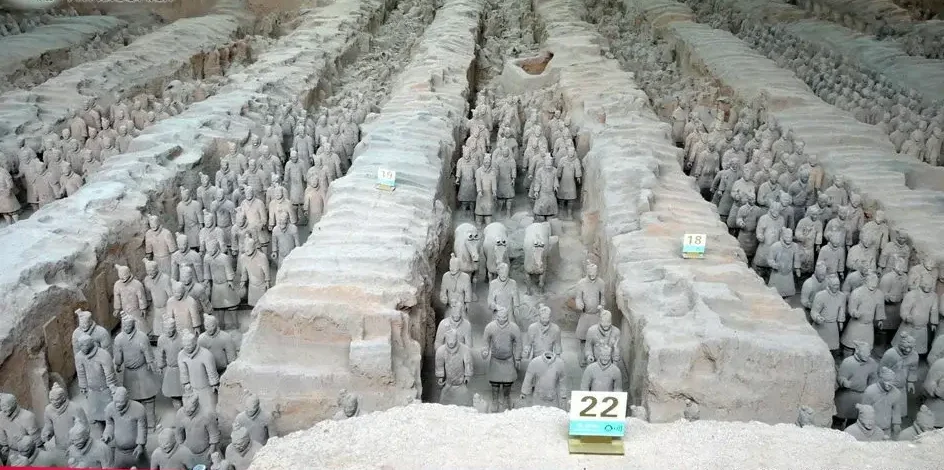
The craftsmanship of the Terracotta Warriors is exquisite, with each figure lifelike and vivid. According to archaeologists’ research, every warrior possesses distinct facial features and expressions, while their attire and weaponry are meticulously detailed, showcasing the equipment and combat stances of the Qin Dynasty army. The sheer scale of these clay warriors and horses is awe-inspiring, radiating reverence for the power of Emperor Qin Shi Huang.
The discovery of the Terracotta Army has also raised a series of mysteries. First is the sheer scale of the site: thousands of figures have been unearthed so far, yet archaeologists believe this is merely the tip of the iceberg, with many more waiting to be discovered. This fuels curiosity and anticipation about the secrets still hidden within Qin Shi Huang’s mausoleum.
The preservation and restoration of the terracotta warriors present a monumental challenge. Buried underground for millennia, these clay figures face natural erosion and the ravages of time. Archaeologists must undertake meticulous cleaning and employ advanced techniques for restoration and conservation to ensure the warriors’ survival, allowing future generations to witness the splendor of ancient China.
The discovery of the Terracotta Army has also raised a series of mysteries. First is the sheer scale of the site: thousands of figures have been unearthed so far, yet archaeologists believe this is merely the tip of the iceberg, with many more waiting to be discovered. This fuels curiosity and anticipation about the secrets still hidden within Qin Shi Huang’s mausoleum.
The preservation and restoration of the terracotta warriors present a monumental challenge. Buried underground for millennia, these clay figures face natural erosion and the ravages of time. Archaeologists must undertake meticulous cleaning and employ advanced techniques for restoration and conservation to ensure the warriors’ survival, allowing future generations to witness the splendor of ancient China.
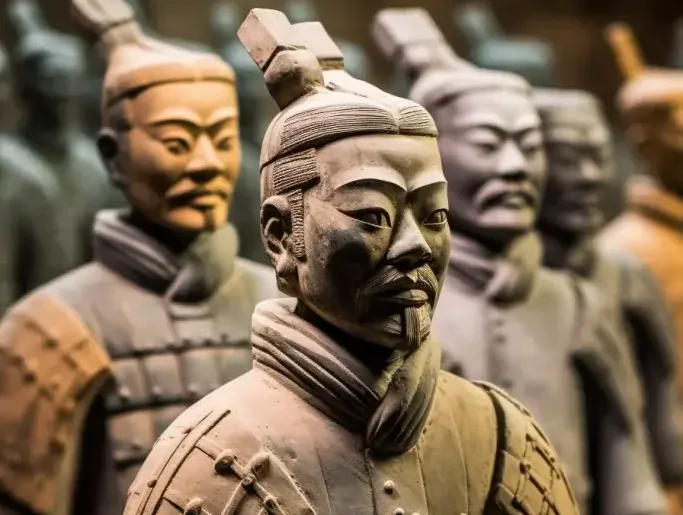
Historians offer differing interpretations regarding the purpose and symbolism of the Terracotta Army. One perspective holds that the terracotta warriors were created to accompany Emperor Qin Shi Huang into the afterlife, ensuring he could continue to enjoy power and authority in the next world. Another perspective suggests they represent the armies that unified the six states, showcasing his governing prowess and ambition. A deeper interpretation posits that the terracotta warriors symbolize not only power but also Qin Shi Huang’s pursuit of immortality and his belief in the afterlife.
Regardless of their specific meaning, the discovery of the Terracotta Army offers us a profound window into the era of Qin Shi Huang. By studying these figures, we gain insights into ancient China’s military strategy, cultural heritage, and craftsmanship. The Terracotta Army has also become a crucial subject in archaeology and cultural heritage preservation, exerting a significant influence on subsequent research and academic exchange.
These terracotta warriors and horses not only demonstrate Qin Shi Huang’s power and governing prowess but also represent his pursuit of immortality and belief in the afterlife. However, the discovery of the Terracotta Army has also sparked profound explorations into ancient history and culture, while simultaneously raising a series of mysteries and questions. The task of preserving and restoring the Terracotta Army is an immense challenge, requiring meticulous cleaning and advanced restoration techniques. Interpretations of the army’s purpose and symbolic meaning also vary, prompting deep reflection on its true significance.
Regardless of their specific meaning, the discovery of the Terracotta Army offers us a profound window into the era of Qin Shi Huang. By studying these figures, we gain insights into ancient China’s military strategy, cultural heritage, and craftsmanship. The Terracotta Army has also become a crucial subject in archaeology and cultural heritage preservation, exerting a significant influence on subsequent research and academic exchange.
These terracotta warriors and horses not only demonstrate Qin Shi Huang’s power and governing prowess but also represent his pursuit of immortality and belief in the afterlife. However, the discovery of the Terracotta Army has also sparked profound explorations into ancient history and culture, while simultaneously raising a series of mysteries and questions. The task of preserving and restoring the Terracotta Army is an immense challenge, requiring meticulous cleaning and advanced restoration techniques. Interpretations of the army’s purpose and symbolic meaning also vary, prompting deep reflection on its true significance.
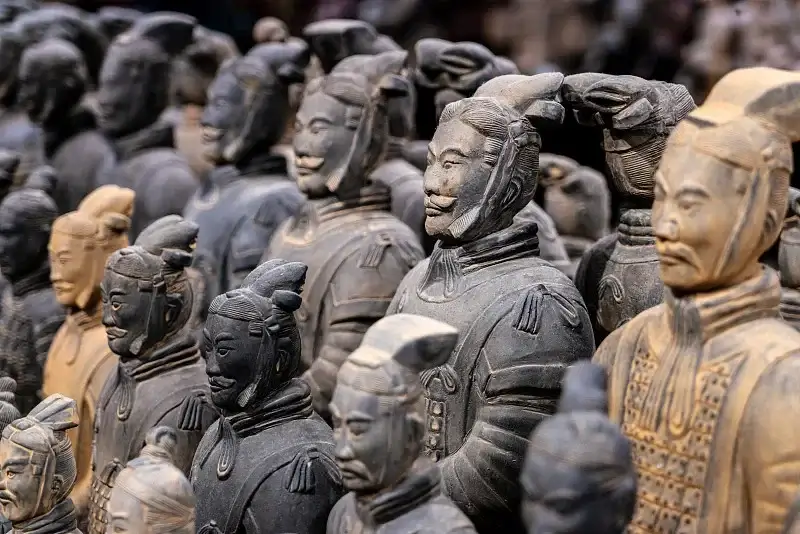
Beyond the Terracotta Army itself, the exploration of Emperor Qin Shi Huang’s mausoleum remains a fascinating journey. Despite significant archaeological breakthroughs, the main burial chamber of the Qin Emperor’s tomb has yet to be fully revealed. This magnificent ancient tomb may still conceal more treasures and secrets, awaiting our further discovery.
The journey to uncover the Terracotta Army takes us into the tomb of an ancient emperor, revealing its astonishing treasures. These terracotta warriors, with their exquisite craftsmanship and immense scale, demonstrate the power and governing prowess of Emperor Qin Shi Huang, while also inspiring deeper exploration into ancient history and culture.
The journey to uncover the Terracotta Army takes us into the tomb of an ancient emperor, revealing its astonishing treasures. These terracotta warriors, with their exquisite craftsmanship and immense scale, demonstrate the power and governing prowess of Emperor Qin Shi Huang, while also inspiring deeper exploration into ancient history and culture.
The author believes
As guardians of the ancient Chinese empire, the Terracotta Warriors hold significant historical and cultural importance. Their craftsmanship and arrangement showcase the Qin Dynasty’s formidable military might and the majesty of a unified empire, while also revealing Emperor Qin Shi Huang’s pursuit of power and his yearning for the afterlife. The journey of discovering the Terracotta Warriors offers us a chance to unlock the secrets of these astonishing treasures within the ancient tomb.

